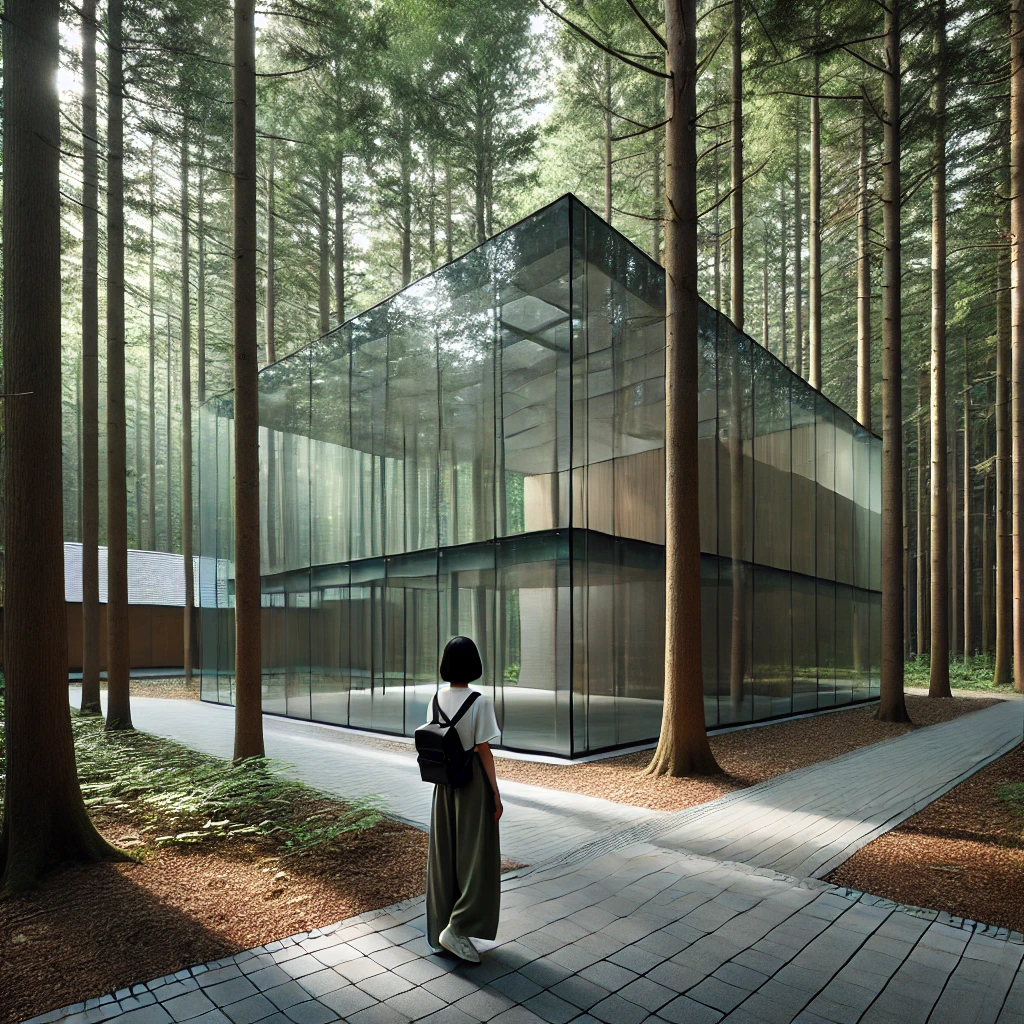ChatGPT:
The Kröller-Müller Museum, located in the Hoge Veluwe National Park in Otterlo, Netherlands, is renowned for its impressive collection of art and its extensive sculpture garden. It was founded by Helene Kröller-Müller, a German-born art collector, and her husband Anton Kröller, a wealthy industrialist. The museum holds the second-largest collection of Vincent van Gogh’s paintings in the world, as well as works by other prominent artists such as Pablo Picasso, Piet Mondrian, and Georges Seurat.
Origin and History:
Helene Kröller-Müller had a deep passion for art, and during the early 20th century, she amassed an extraordinary collection with the assistance of her art advisor, H.P. Bremmer. The Kröllers were financially well-off due to Anton’s involvement in the Müller & Co. trading company, and Helene used their wealth to pursue her interest in modern art.
The Kröllers began acquiring works of art around 1907, and over the next two decades, Helene collected nearly 11,500 works, aiming to establish a museum open to the public. In 1935, she donated her collection to the Dutch state with the vision of creating a museum that would provide an accessible place for people to enjoy art.
Development:
The construction of the Kröller-Müller Museum began in 1938, designed by architect Henry van de Velde. The museum officially opened to the public in 1938, just before the outbreak of World War II. Helene’s intention was to create a “museum-house” where people could come into close contact with art in a relaxed and natural environment, surrounded by the beauty of the Veluwe landscape.
Over the years, the museum expanded significantly. One of the major additions was its sculpture garden, which opened in 1961. The garden is one of the largest in Europe, covering 25 hectares, and it features works by artists such as Auguste Rodin, Barbara Hepworth, and Henry Moore. This open-air gallery embodies Helene Kröller-Müller’s vision of integrating art with nature.
In the 1970s, the museum added a new wing designed by Dutch architect Wim Quist to accommodate its growing collection and provide more space for temporary exhibitions.
Today, the Kröller-Müller Museum stands as a testament to Helene Kröller-Müller’s love for modern art, showcasing not only Van Gogh’s iconic pieces but also a diverse collection that spans Impressionism, Expressionism, and modern sculpture. The museum’s location within the Hoge Veluwe National Park provides visitors with a unique cultural and natural experience, encouraging an appreciation for both the art indoors and the expansive landscape outdoors.
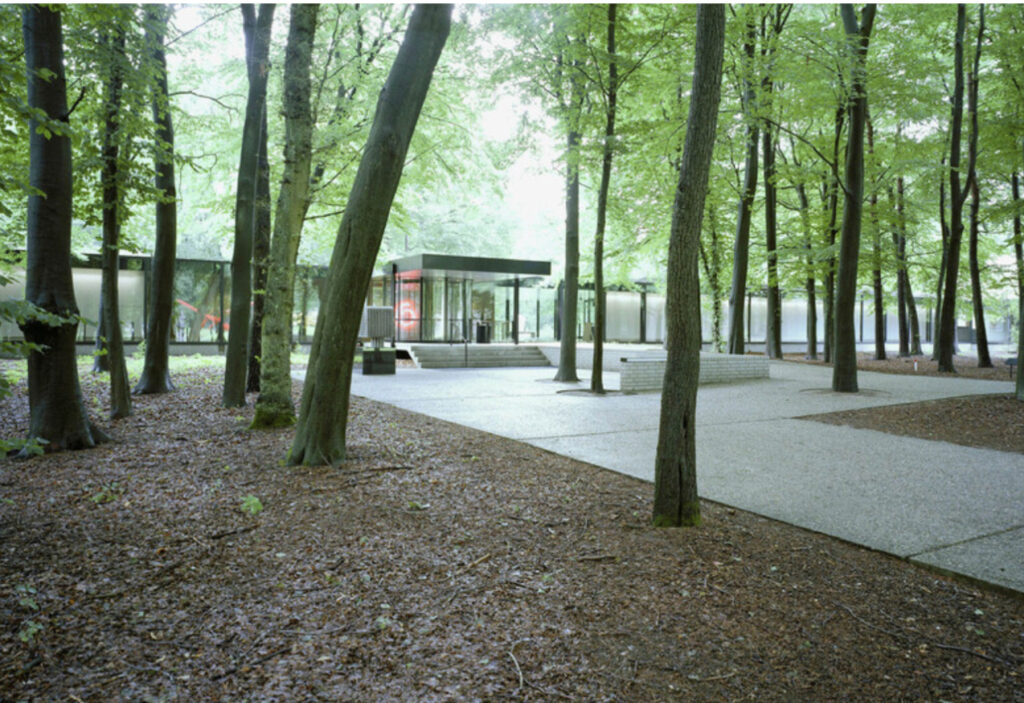
The Kröller-Müller Museum is situated in the Hoge Veluwe National Park, one of the largest and most diverse nature reserves in the Netherlands. Covering approximately 55 square kilometers (over 13,500 acres), the park encompasses a range of natural environments, including forests, heathlands, sand dunes, and grasslands. This diverse landscape makes it a haven for flora and fauna, attracting visitors who are interested in both art and nature.
Landscape and Features:
The Hoge Veluwe National Park is characterized by its rolling sand dunes and expansive heathlands, interspersed with dense woodlands. This combination creates a striking visual diversity, making it an ideal setting for a peaceful retreat into nature. The park’s unique topography was shaped largely by glacial and wind activity, creating vast stretches of sandy soil and gently undulating dunes.
There are also several cycling and walking paths that traverse the park, making it easy for visitors to explore the landscape. One of the highlights is the network of “white bicycles”—more than 1,800 bicycles available for free use by visitors. These bikes are a convenient way to explore the park, moving seamlessly from one beautiful vista to the next.
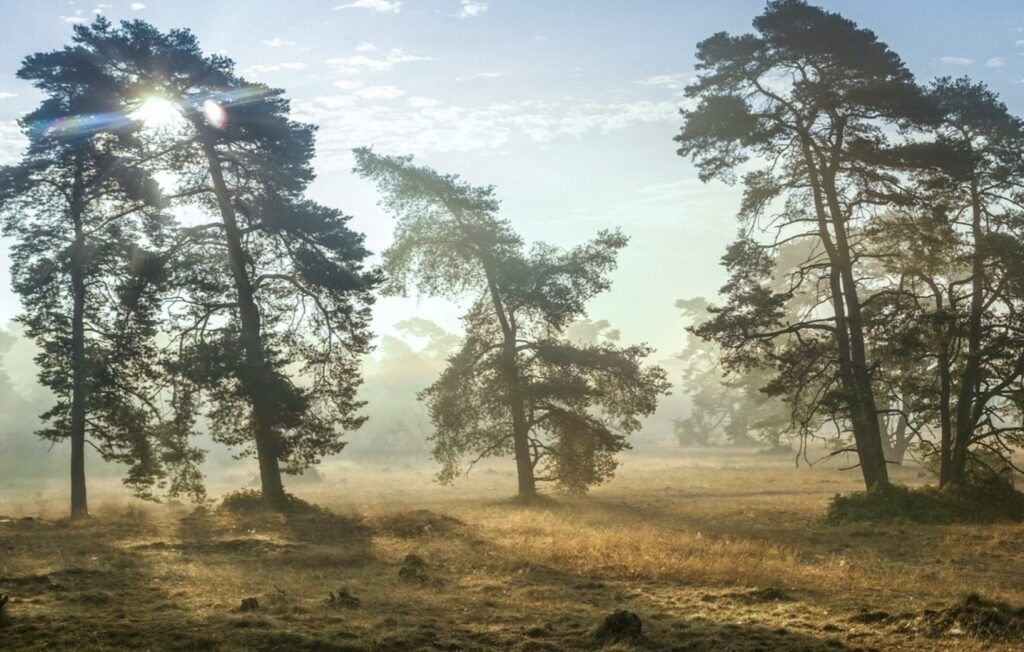
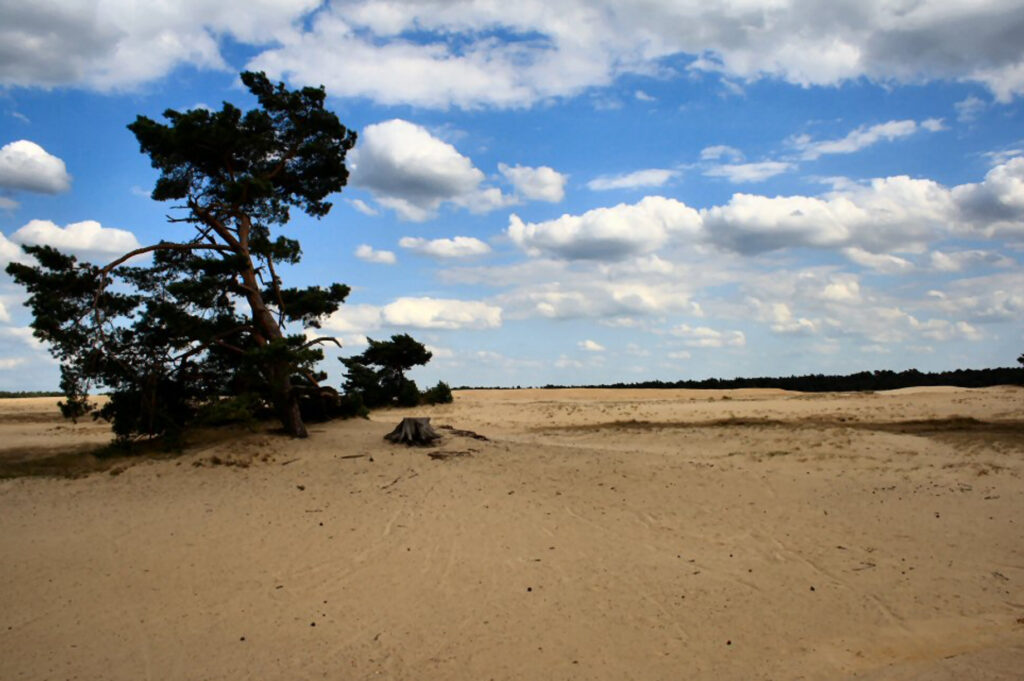
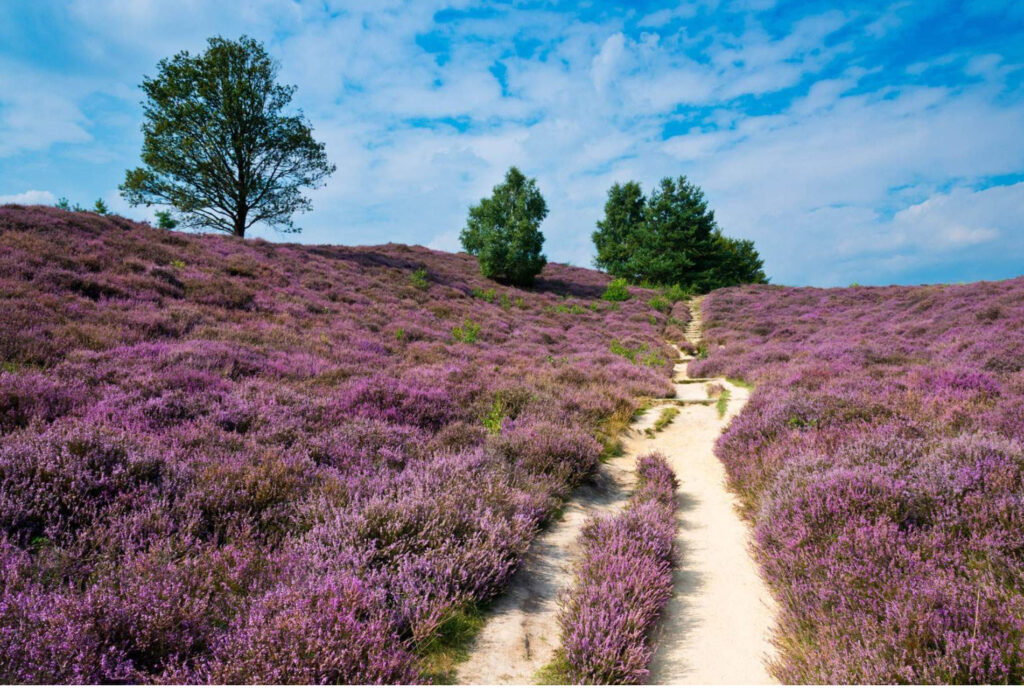
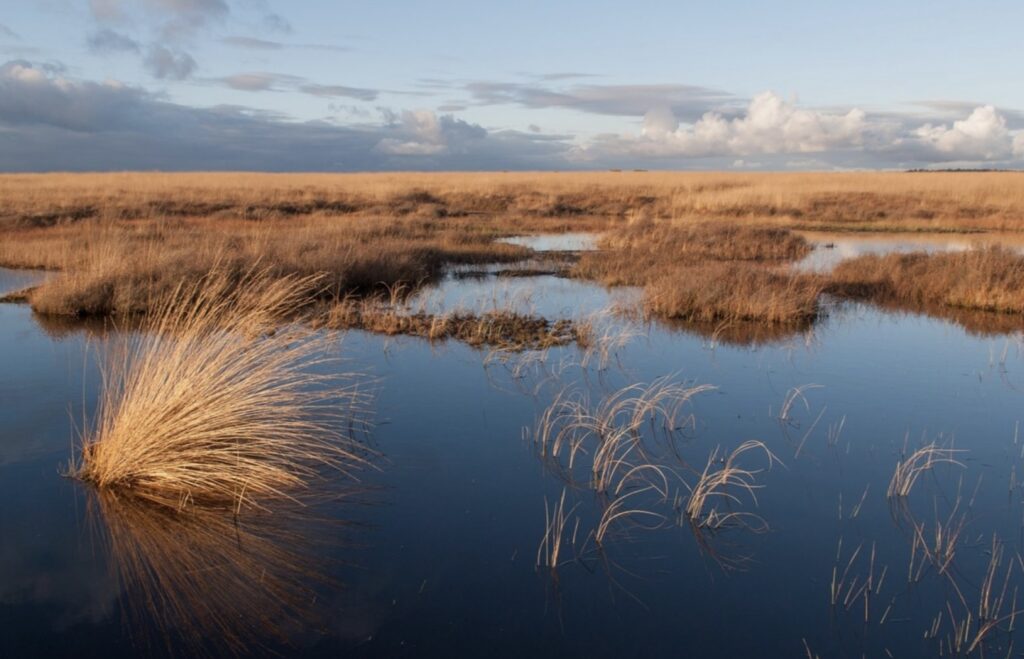
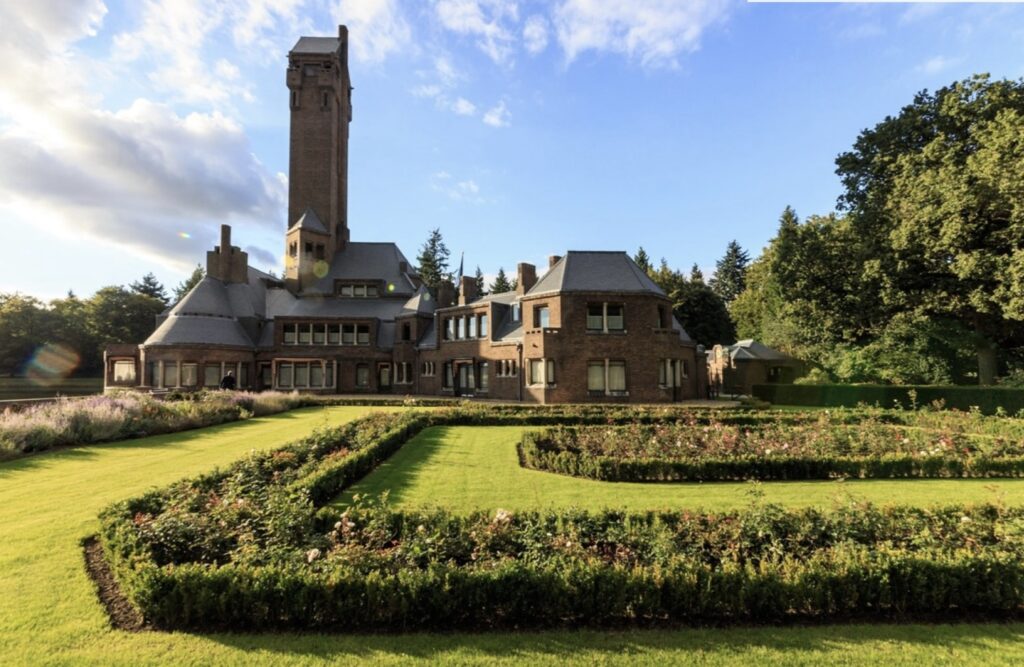
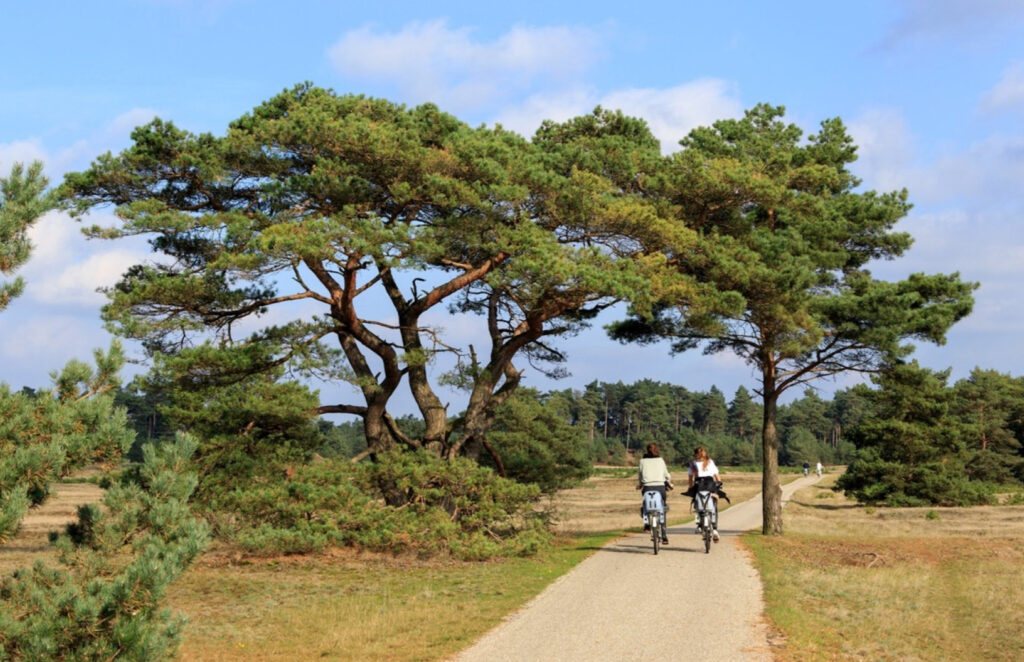
Wildlife:
Hoge Veluwe National Park is home to a variety of wildlife. Visitors may encounter red deer, wild boar, mouflon sheep, and various species of birds, including woodpeckers and birds of prey. The park’s diverse ecosystems provide suitable habitats for many animal species, and its extensive trails make wildlife spotting a popular activity.
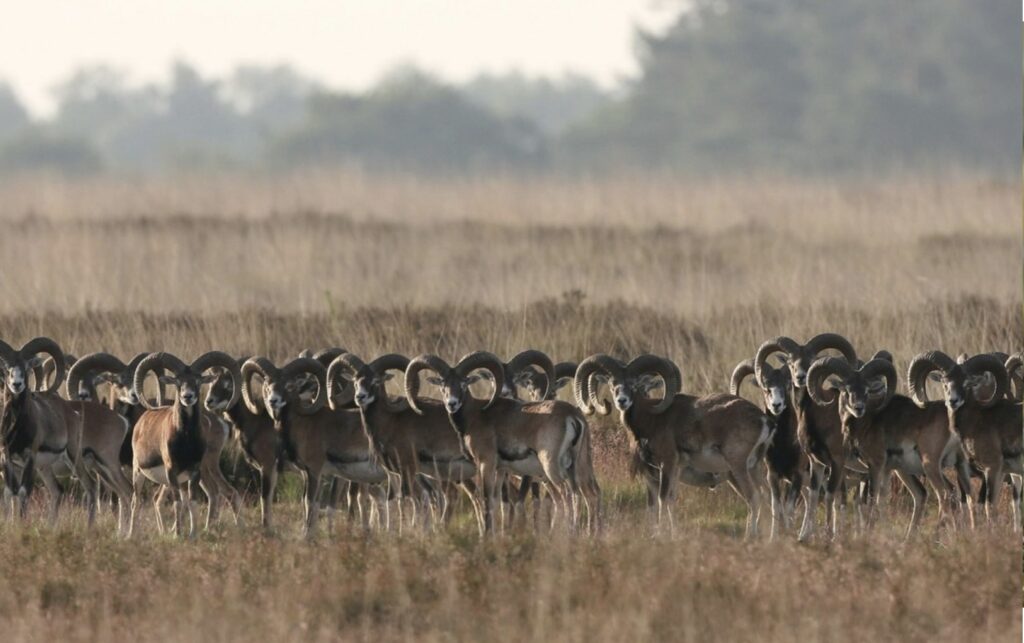
Activities:
Visitors to the park can engage in various activities, such as hiking, cycling, and guided tours. The park’s nature trails are well-maintained, offering different routes suited to all levels of difficulty and interest. The visitor centers, such as the Museonder, provide insights into the natural and cultural history of the region, enhancing the educational experience of the park.
Integration with the Museum:
The setting of the Kröller-Müller Museum within the Hoge Veluwe National Park creates a harmonious integration of art and nature. The museum’s sculpture garden blends seamlessly into the park environment, featuring outdoor works by prominent sculptors that are placed among the trees, meadows, and open spaces. The combination of curated art pieces and natural scenery provides a unique experience that invites contemplation and relaxation.
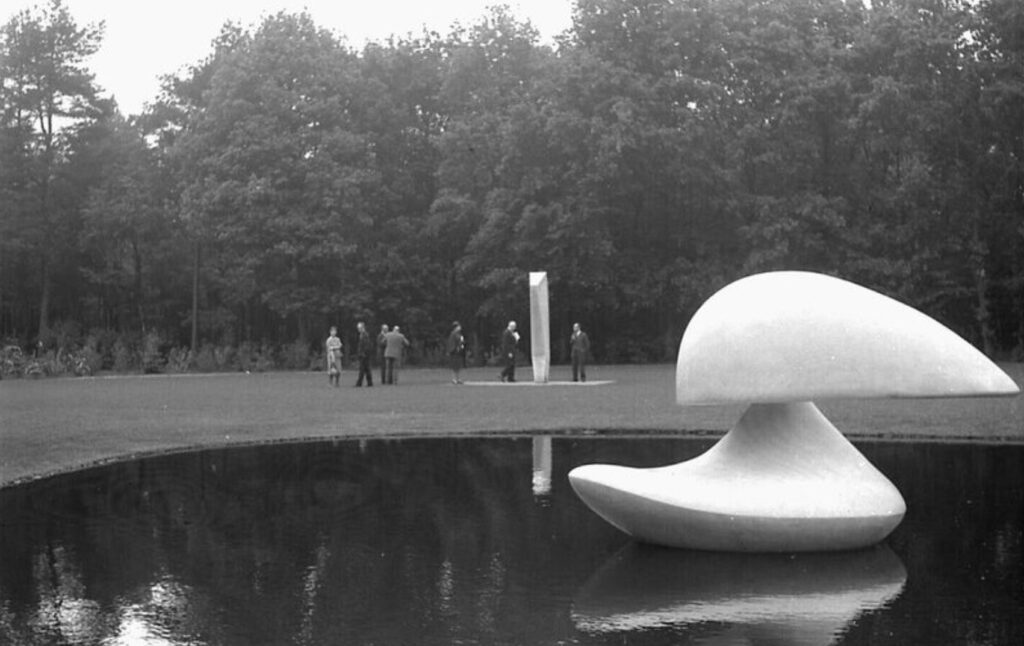
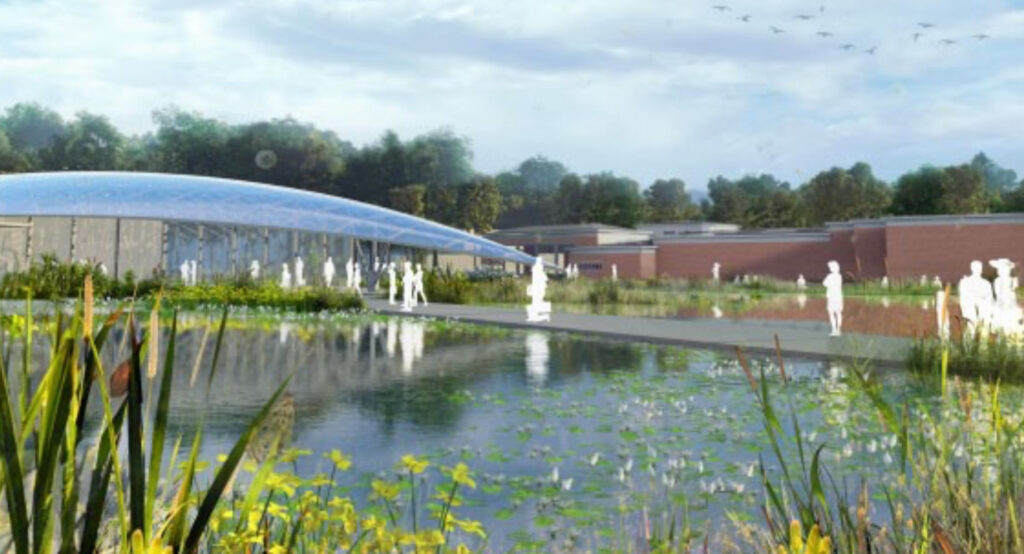
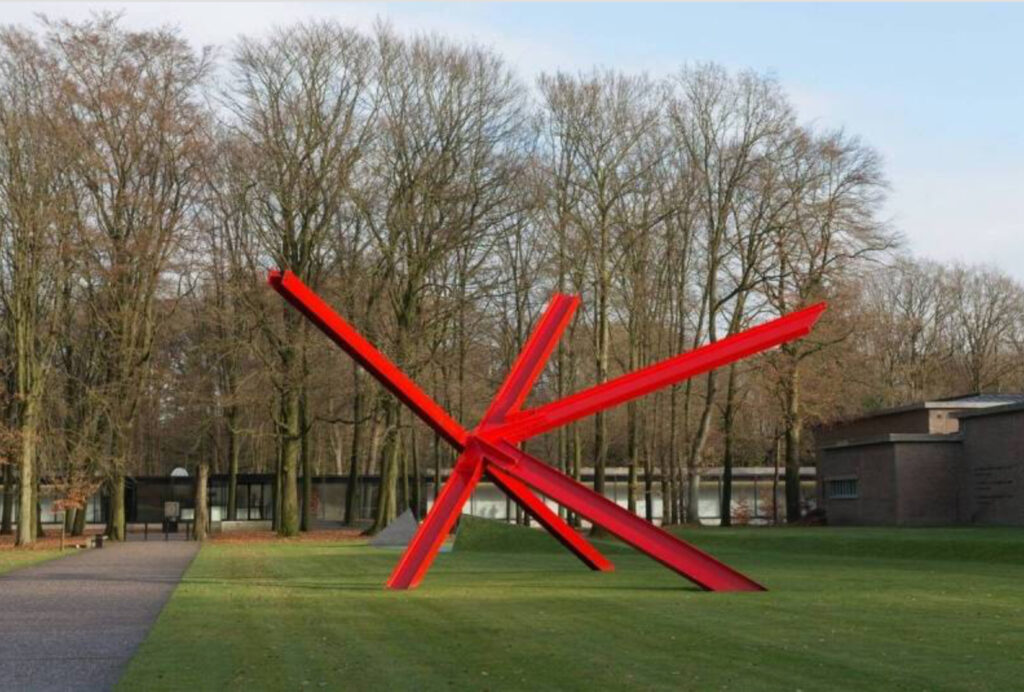
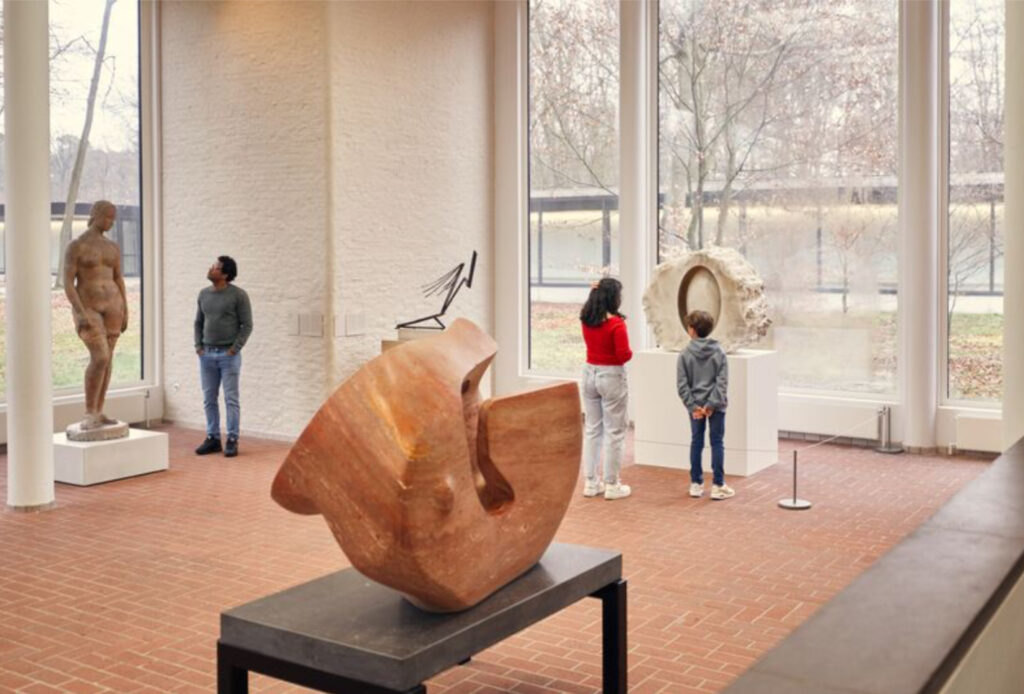
Overall, Hoge Veluwe National Park, with its beautiful landscapes and thriving wildlife, is an essential part of the Kröller-Müller experience. It adds an extra dimension to the museum visit, allowing guests to enjoy both cultural enrichment and the tranquility of the surrounding natural world.
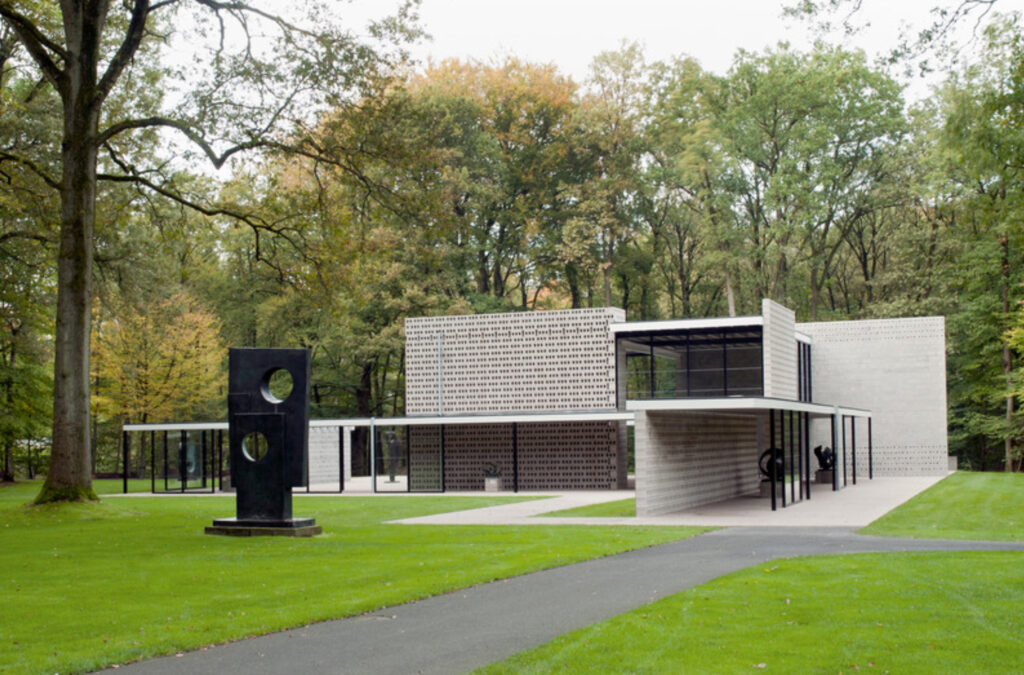

The Kröller-Müller Museum is known for its extensive collection of modern art, with an emphasis on the works of Vincent van Gogh. Below are some of the most well-known artworks in the museum’s collection:
Vincent van Gogh:
- “Café Terrace at Night” (1888) – One of Van Gogh’s most famous paintings, depicting a lively café scene under a starlit sky in Arles, France.
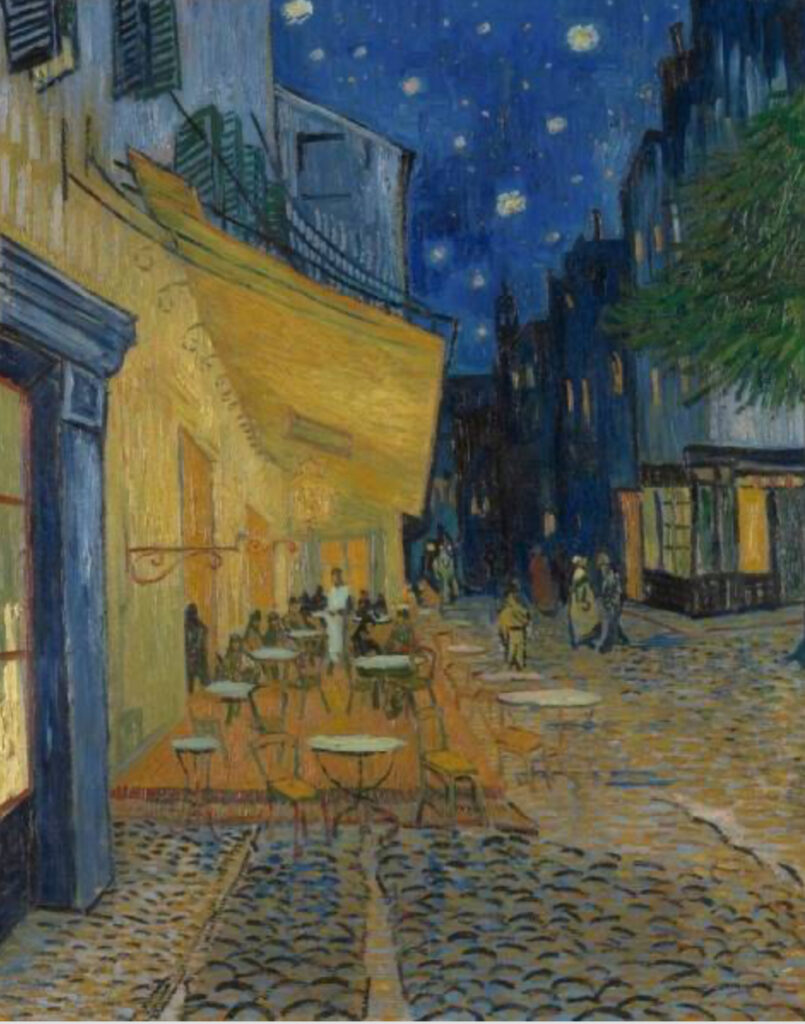
- “The Potato Eaters” (1885) – A poignant depiction of a peasant family at dinner, reflecting Van Gogh’s interest in rural life.
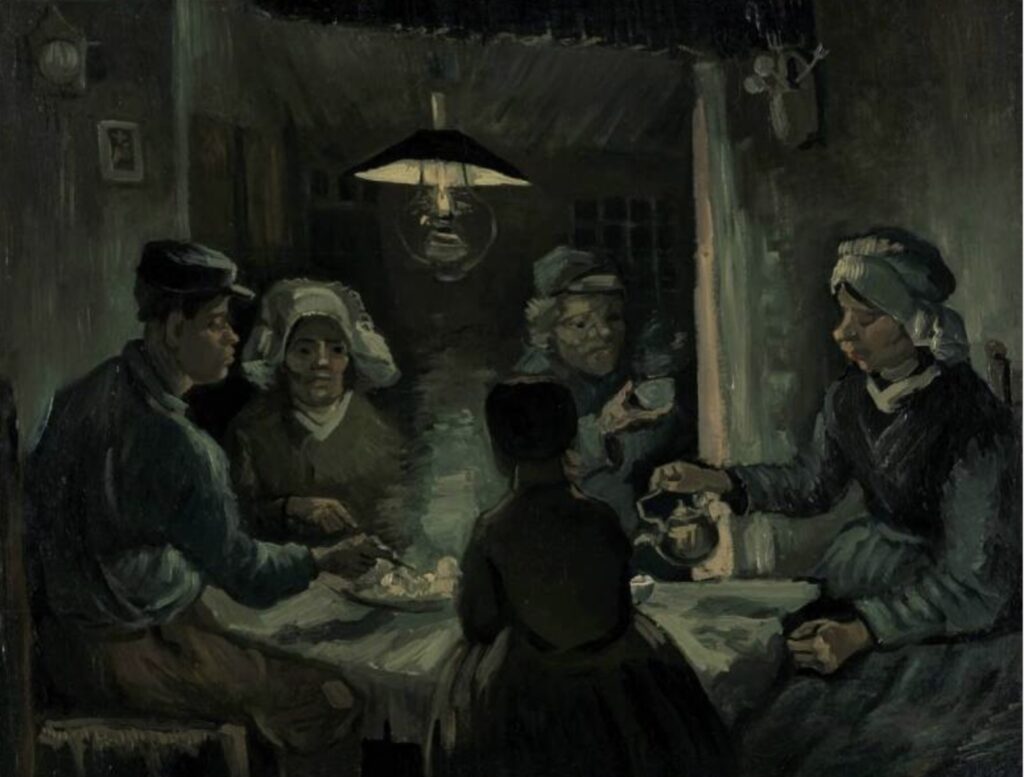
- “Self-Portrait” (1887) – One of Van Gogh’s self-portraits showcasing his iconic brushwork and use of color.
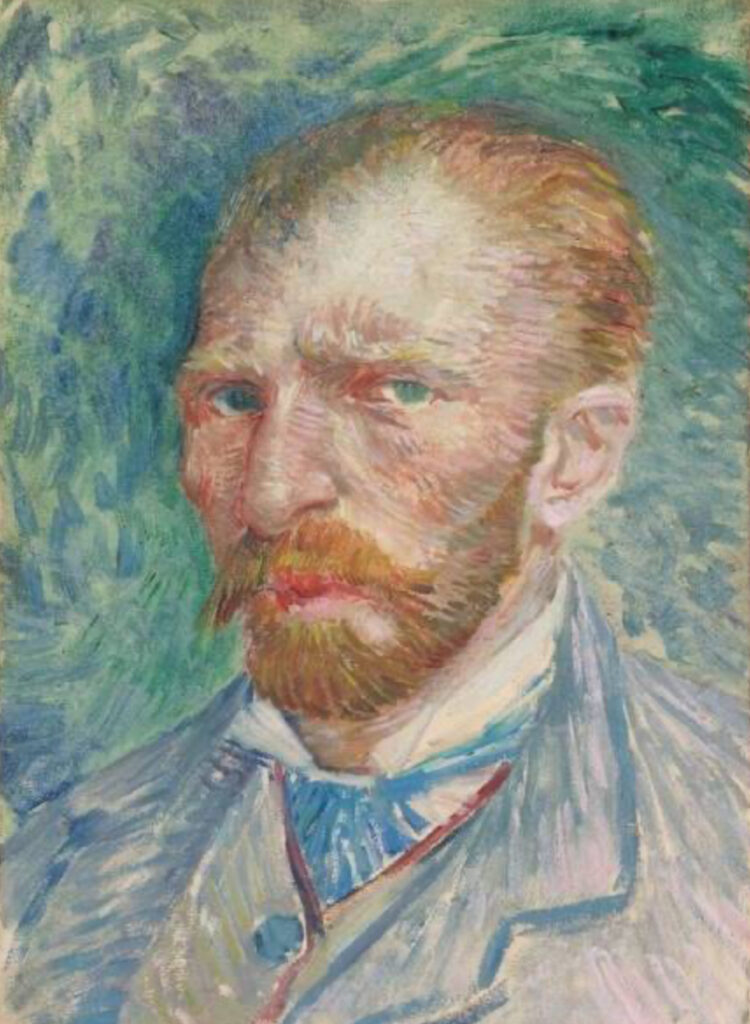
- “Sorrowing Old Man (‘At Eternity’s Gate’)” (1890) – An evocative painting portraying the anguish of an elderly man, painted during the final months of Van Gogh’s life.
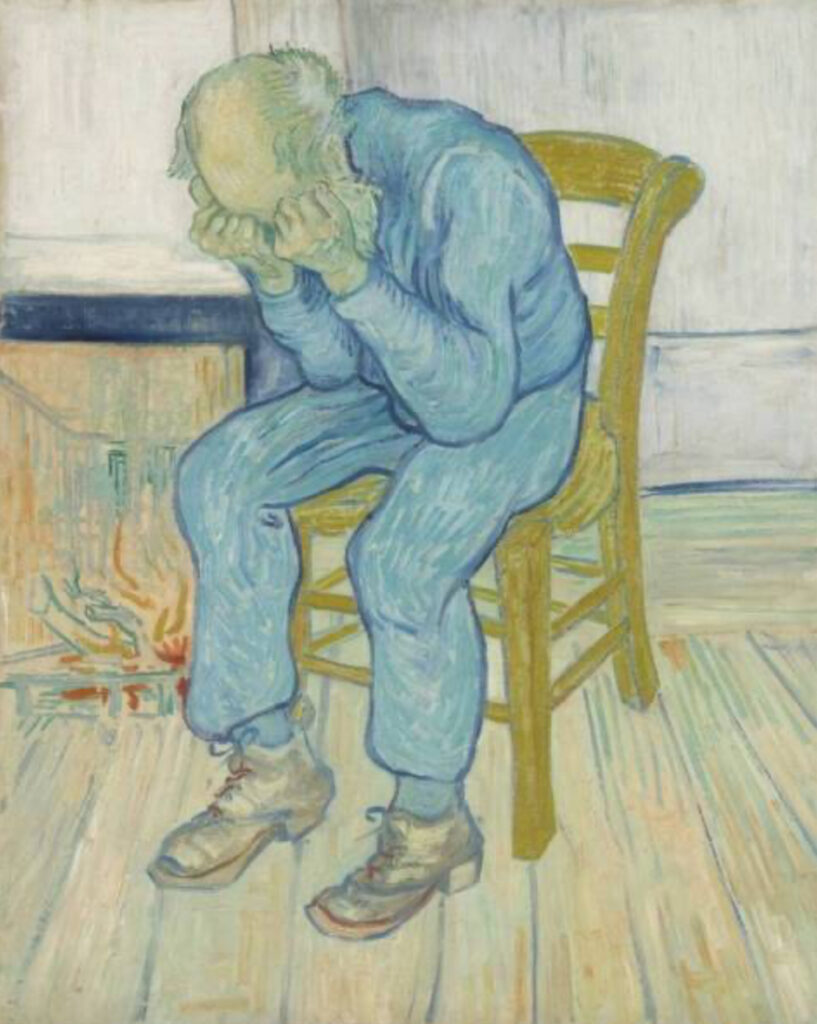
- “Wheatfield with Reaper” (1889) – An expressive piece representing a reaper working under the bright sun, part of Van Gogh’s series of wheatfield paintings.
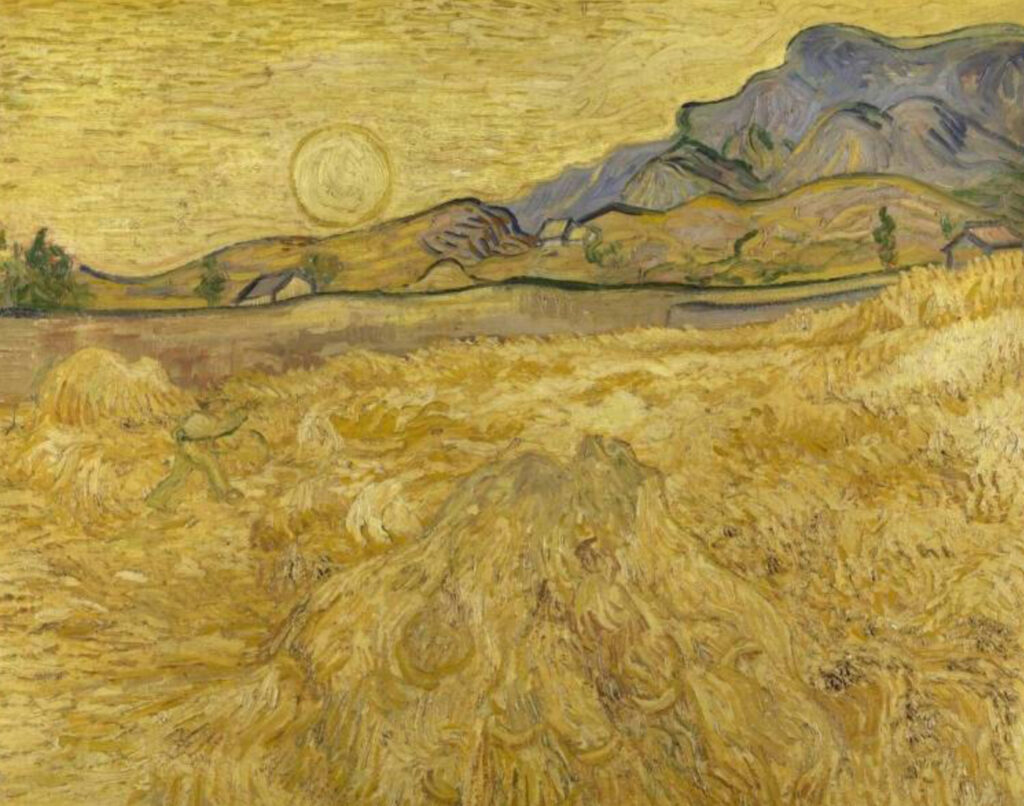
Other Prominent Artists:
- Georges Seurat – “Le Chahut” (1889–1890):
- A pointillist painting depicting a lively cabaret scene with dancers. It is a significant example of Seurat’s innovative use of color theory and pointillism.
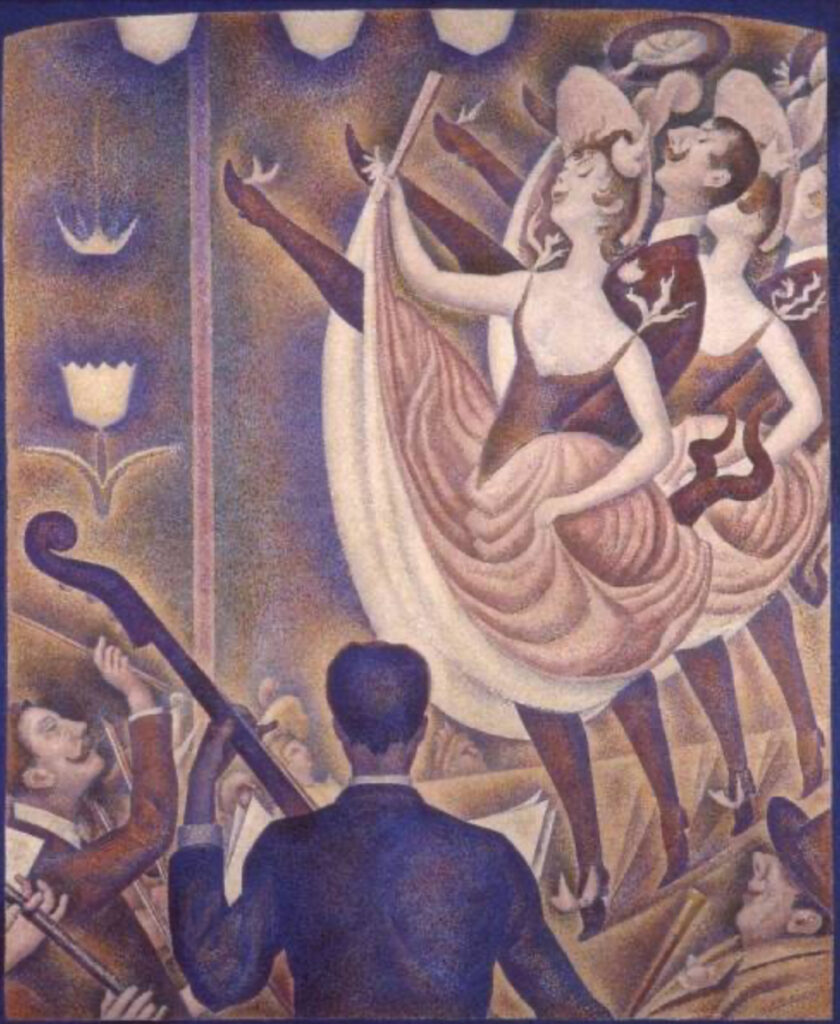
- Pablo Picasso – “Portrait of a young woman “ 1901
- From Picasso’s Blue Period, this work reflects his early interest in capturing human emotions through expressive color schemes and simplified forms.
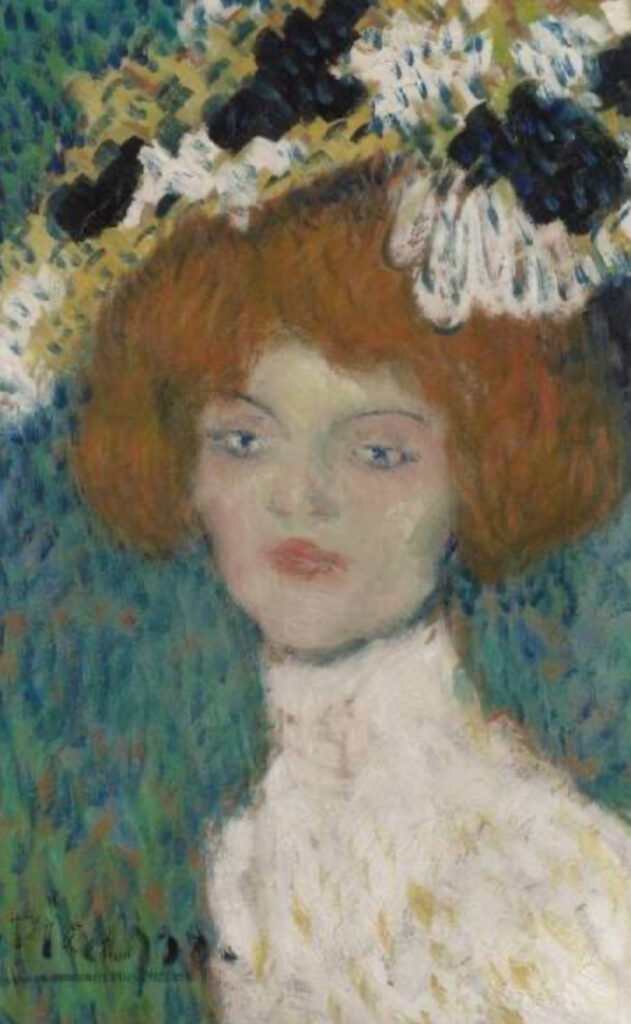
- Piet Mondrian – “Composition in Colour A” (1917):
- A colorful abstract work demonstrating Mondrian’s transition towards De Stijl, characterized by geometric forms and primary colors.
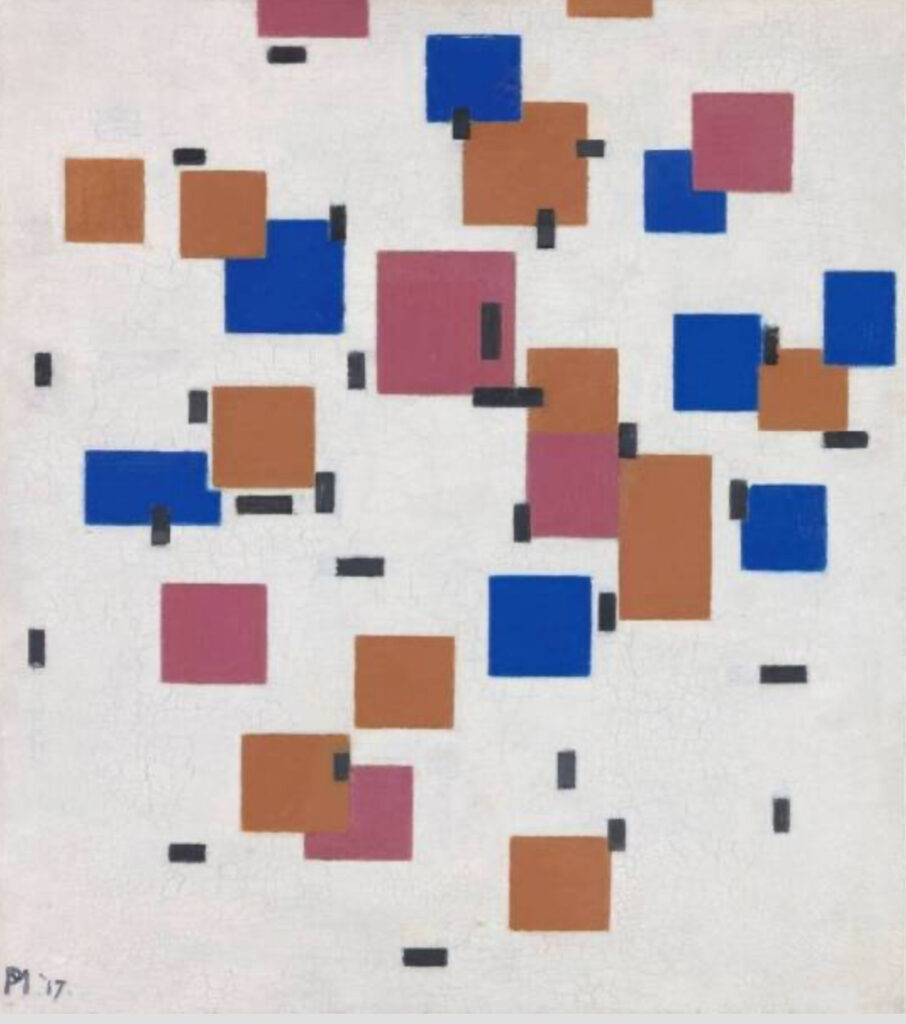
Sculpture Garden Highlights:
- Jean Dubuffet – “Jardin d’émail” (1974): A large, immersive sculpture designed to look like an abstract garden, made of white and black enamel.
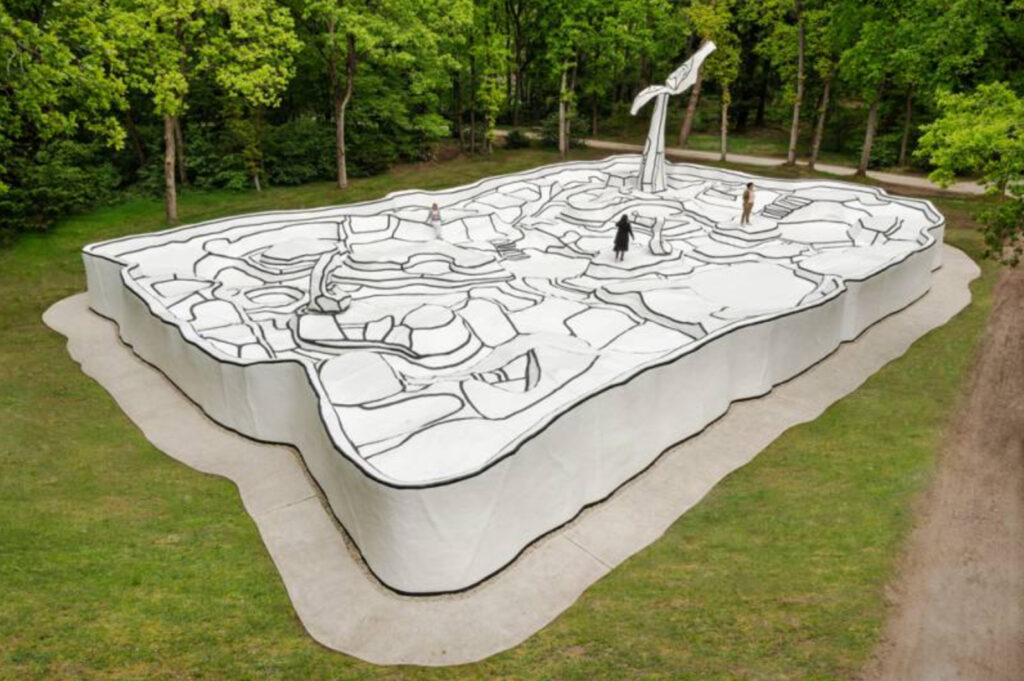
- Henry Moore – “Reclining Figure”: A notable example of Moore’s work with the human form, abstracted to create a sense of both monumentality and organic flow.
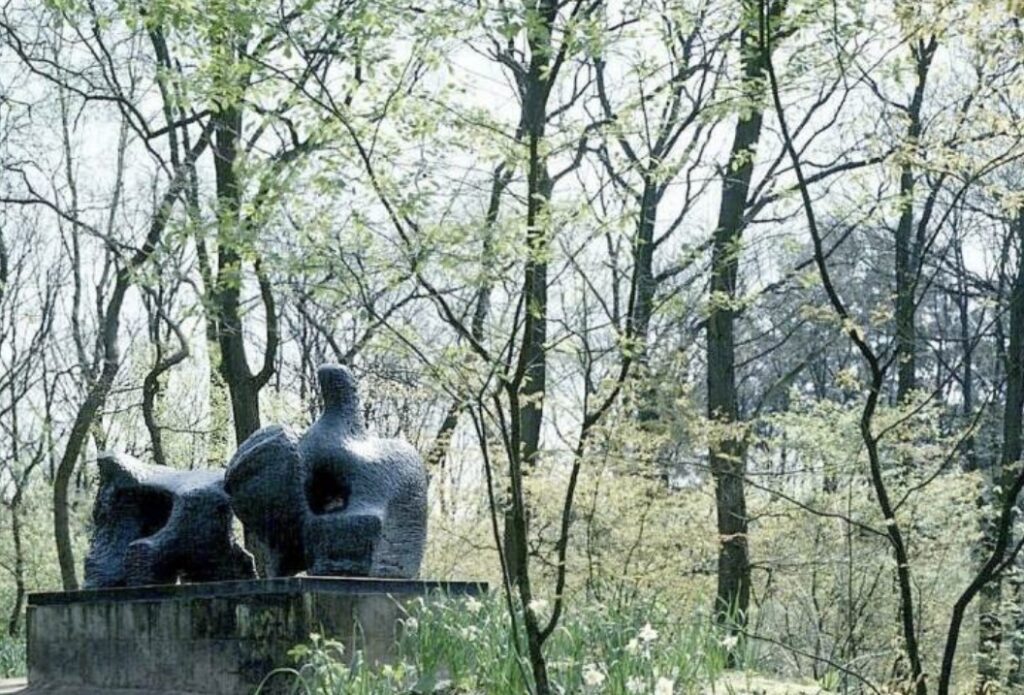
- Barbara Hepworth – “Squares with Two Circles”: A work that exemplifies Hepworth’s exploration of space, balance, and harmony.
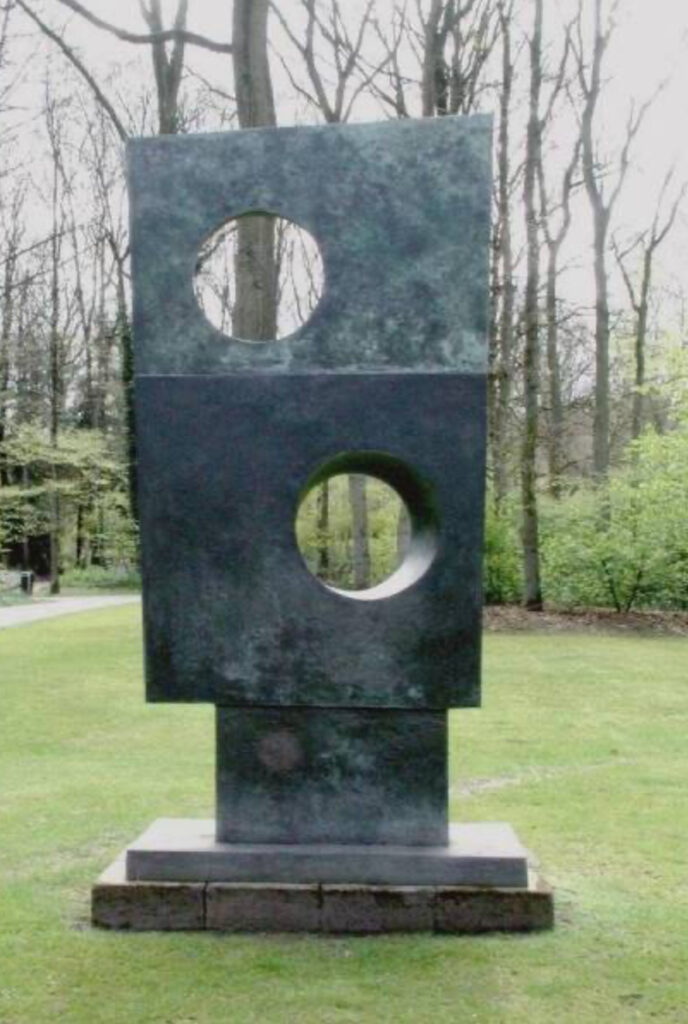
The Kröller-Müller Museum is especially celebrated for its collection of Van Gogh works, which includes not only famous paintings but also many lesser-known drawings, offering insight into the artist’s creative process. The diversity of the collection, with pieces from Impressionism, Cubism, and De Stijl, provides a comprehensive view of the development of modern art.
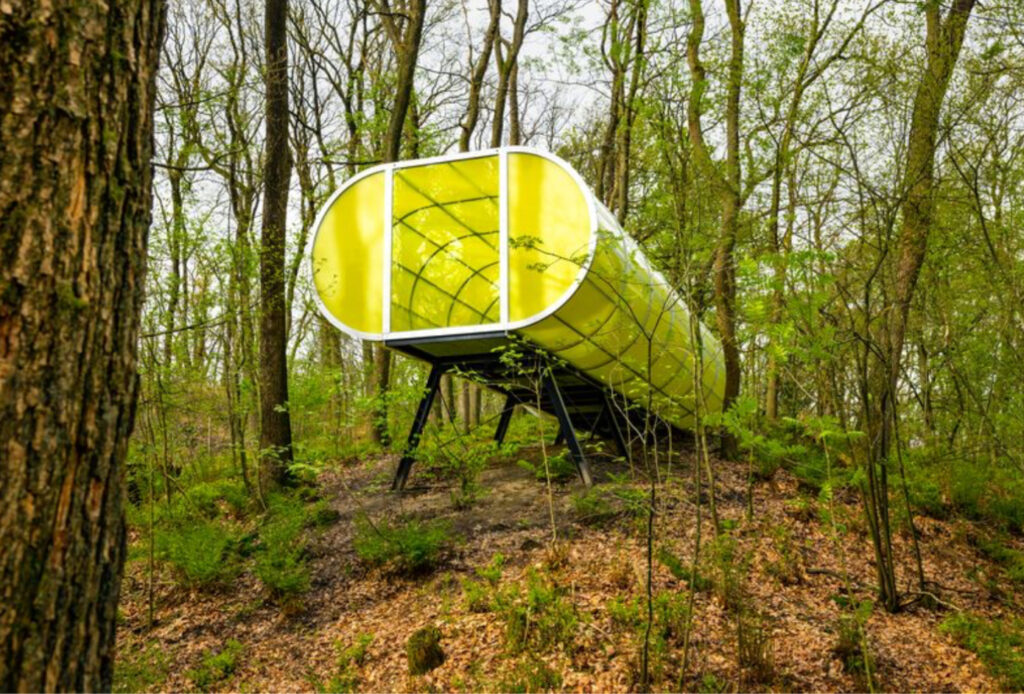
Here’s a one-day itinerary for visiting the Kröller-Müller Museum and exploring Hoge Veluwe National Park by bike. This plan includes a mix of art appreciation, nature, and outdoor activities to make the most of your day.
Morning: Arrival and Museum Visit
- 9:30 AM: Arrive at Hoge Veluwe National Park via the entrance closest to Otterlo. Purchase tickets for the park and museum.
- 10:00 AM: Pick up one of the free white bicycles at the entrance and enjoy a leisurely bike ride through the park’s scenic paths to reach the museum. The ride takes around 20-30 minutes, depending on the route.
- 10:30 AM: Kröller-Müller Museum Visit. Spend time exploring the museum’s indoor collection, focusing on the impressive Vincent van Gogh collection as well as works by Seurat, Picasso, and Mondrian. You can also enjoy the temporary exhibitions if available.
Midday: Sculpture Garden and Lunch
- 12:30 PM: Head to the Sculpture Garden, one of the largest in Europe. Take your time walking around, enjoying works by Henry Moore, Barbara Hepworth, Jean Dubuffet, and others, beautifully integrated into the natural landscape.
- 1:15 PM: Have lunch at the museum’s Monsieur Jacques Café, which offers light meals and a comfortable atmosphere overlooking the garden.
Afternoon: Explore Hoge Veluwe National Park by Bike
- 2:00 PM: Pick up your bike and begin exploring more of Hoge Veluwe National Park. Choose one of the numerous cycling trails (many are well marked), allowing you to see the park’s diverse landscapes—heathlands, woodlands, and sand dunes. The park is relatively flat, making it suitable for cyclists of all skill levels.
- 2:45 PM: Stop by the Jachthuis Sint Hubertus (St. Hubertus Hunting Lodge), a notable building designed by architect H.P. Berlage. You can walk around the lodge and admire its unique architecture, which is an important historical landmark in the park.
Late Afternoon: Nature and Relaxation
- 3:30 PM: Continue cycling towards some of the scenic sand dunes in the park, such as the Middenduin area. Take a break here to relax, soak in the landscape, and, if you’re lucky, spot some wildlife, like red deer or mouflon sheep.
- 4:30 PM: Head back towards the museum area or the park entrance where you picked up your bike.
Early Evening: Departure
- 5:00 PM: Arrive back at the entrance, return the bike, and take some time to browse the small visitor center, which features exhibits about the park’s history and ecosystem.
This itinerary offers a balanced mix of cultural experience at the museum and an immersive nature adventure in Hoge Veluwe National Park, all while enjoying an easy bike ride across beautiful trails.
